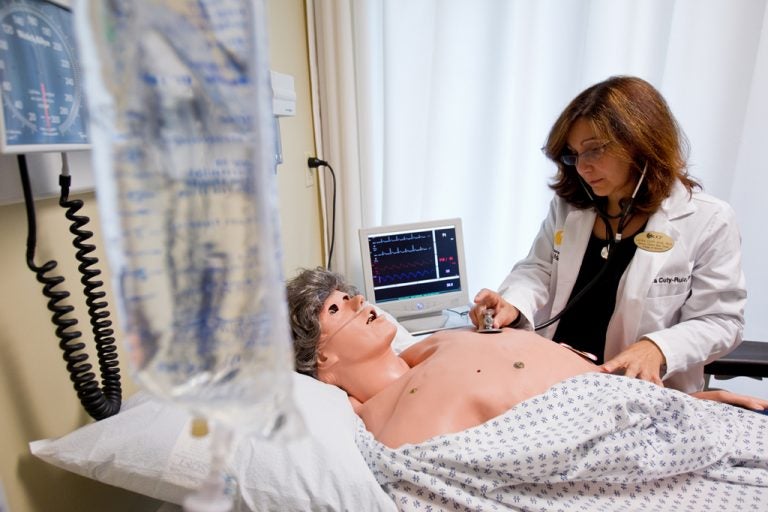Just off State Road 417, a five-minute drive east from Orlando International Airport, a 650-acre parcel of land is fast becoming a $2 billion medical campus, including a medical school, research laboratories and hospitals.
Three years ago the Lake Nona medical city, as it is known, was nothing but a pasture and a promise. Its accelerated creation is the product of hundreds of millions of dollars in government, nonprofit and private investment at a time when Florida’s housing-based economy has been spiraling downward.
“We are working at warp speed here,” said Dr. Deborah C. German, the dean of the College of Medicine at the University of Central Florida, which opened on the Lake Nona campus last month. “Three and a half years ago, the architects weren’t even chosen. Now it’s fully operational.”
The history of this “city” began with a missed opportunity. In 2003, Jeb Bush, the governor at the time, announced plans to court large biomedical companies with government incentives, in an effort to attract higher-paying jobs to Florida. The Scripps Research Institute, based in the La Jolla area of San Diego, accepted $579 million in grants to open a location in Florida.
Orlando business leaders argued that the city would be an ideal place for the Scripps research park, especially the area around Lake Nona, in the relatively undeveloped southeastern quadrant of the city. Except for the Lake Nona Golf and Country Club, a gated community with a golf course by the noted designer Tom Fazio, most of the land sat empty, dotted with a smattering of cows left there for tax reasons (agricultural land in Florida is taxed minimally).
The Tavistock Group, which owns the country club and much of the empty land, set aside about 650 acres for a planned medical city, complete with retail stores and housing. “It’s close to the airport and it has good weather,” Dr. German said. “And there are resorts for kids.”
Orlando was already a major draw for doctors. It was named the country’s top destination for medical meetings by the Healthcare Convention and Exhibitors Association for 13 years straight until 2009, when it fell to second behind San Diego. “Orlando is a destination for relatively half the medical meetings in the U.S.,” said Eric Ushkowitz, director of BioOrlando, a unit of the Metro Orlando Economic Development Commission.
But Orlando lost the Scripps deal to Jupiter, Fla., a decision it said was due in part to its lack of a medical school, a crucial breeding ground for scientists and the core of any medical campus. So three years later, when the Burnham Institute for Medical Research agreed to build in Florida in exchange for a $310 million incentive package, Orlando’s chances improved when the University of Central Florida agreed to build its medical school at Lake Nona.
The Tavistock Group donated a portion of the 650-acre parcel for the institution to build on, and enough money was raised from the local community to pay tuition and living expenses for all 41 members of the charter class. That financing put the medical school on the map.
The medical school should be appealing to future classes for other reasons. The library, for example, has beautiful views and a notable absence of books. Students are instead given Apple iPods with access to online databases.
As soon as the medical school was approved in 2006, the Burnham Institute (now called the Sanford-Burnham Medical Research Institute after a recent $50 million donation by the billionaire T. Denny Sanford) chose Lake Nona for its new home. The building, which opened last year, contains one of the country’s few robotic high-throughput screening centers — machines that can run a huge number of biological tests very quickly.
Even so, $310 million was a large amount of government spending for just 300 well-paying scientist jobs. Adding up all the life-sciences incentives that Florida doled out, the total far exceeded a billion dollars. When the economy faltered, those incentives all but dried up. If the Sanford-Burnham Institute and the College of Medicine could not attract further development, the incentive money would not have been justified.
“We can’t spend another billion dollars to recruit research institutes,” Mr. Ushkowitz said.
So far the gamble has paid off. The announcements of the medical school and research institute began the hoped-for clustering effect, in which a variety of medical institutions scooped up neighboring plots to foster collaboration.
The M.D. Anderson Cancer Center Orlando rented lab space at one of the medical school buildings. A Veterans Affairs hospital is being built, along with a V.A. medical simulation training center. The University of Florida will open a research laboratory, and four incubator buildings for start-up biotech companies are in planning stages.
Also, Nemours, a children’s healthcare provider with a hospital in Wilmington, Del., and clinics in Florida, New Jersey and Pennsylvania, had bought land for a hospital elsewhere in Orlando in 2006 before it heard about the medical city. Those plans were scrapped and in 2009 the hospital broke ground at Lake Nona. The hospital, which plans to make use of Orlando’s warm weather with rooftop healing gardens, will open in 2012. Ronald McDonald House Charities is also considering opening a facility on hospital grounds.
“A lot of Sanford-Burnham researchers have similar interests with ours,” said Roger Oxendale, the chief executive of Nemours. “A lot of the questions they’ll be asking about diabetes and obesity, they’ll be asking with respect to childhood diseases. I think we haven’t realized the potential of these partnerships.”
Source: New York Times, Sept. 7, 2010, Orlando’s Newest Attraction is Medical, by Jonathan Vatner.
A version of this article appeared in print on Sept. 8, 2010, on page B5 of the New York edition.
